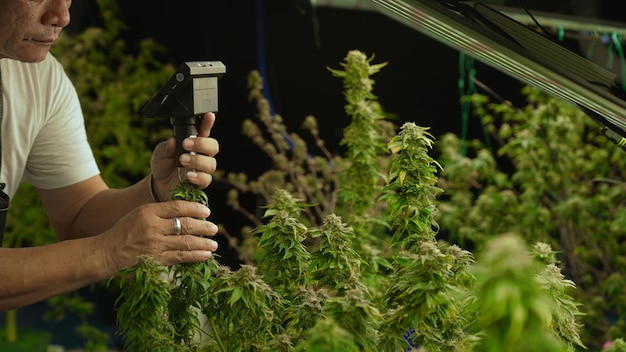As cannabis legalization expands, it’s important to understand its environmental impact. While cannabis can offer therapeutic benefits, its cultivation has both positive and negative ecological effects. With services like Atlantic Gas, cannabis is more accessible, but what does its production mean for the planet? This article explores the environmental footprint of cannabis cultivation, from water use to carbon emissions, and how to make more sustainable choices.
Water Consumption in Cannabis Cultivation
Water is a critical resource in cannabis cultivation, especially for outdoor grows. Cannabis plants require significant amounts of water, which can strain local resources. For outdoor cultivations, plants consume up to 22 liters of water per day during the growing season. In areas where water scarcity is already an issue, this high demand can lead to environmental challenges.
Indoor cultivation also demands considerable water, although much of it is recycled. Water management strategies, like drip irrigation and rainwater collection, can help minimize water usage. By implementing efficient water practices, cultivators can reduce their impact on local ecosystems.
Energy Consumption and Carbon Footprint
Indoor cannabis cultivation relies heavily on energy. Growers use artificial lighting, climate control, and ventilation systems to create optimal growing conditions. This level of energy consumption results in a substantial carbon footprint, contributing to climate change. In fact, indoor cannabis production can require as much as 2,000 kilowatt-hours (kWh) per kilogram of cannabis, which is roughly the same amount of electricity a typical U.S. home uses in two months.
Efforts to reduce this energy demand include using LED lights and leveraging renewable energy sources like solar and wind. These methods can significantly cut energy use and lower carbon emissions. As awareness grows, more cultivators are adopting these sustainable practices, helping to mitigate the environmental impact.
Land Use and Deforestation
As cannabis cultivation expands, so does the need for agricultural land. In some cases, this has led to deforestation, as growers clear forests to create space for new farms. This not only destroys natural habitats but also contributes to biodiversity loss. Illegal grows, in particular, often cause harm by using remote and protected areas, further exacerbating the issue.
To counteract these effects, some cultivators use indoor vertical farming, which maximizes space efficiency and reduces the need for land expansion. Vertical farming allows for high yields in smaller areas, making it a more sustainable option for large-scale production.
Pesticides and Soil Health
Pesticide use is another concern in cannabis cultivation. To protect plants from pests, some growers use chemical pesticides that can contaminate the soil and nearby water sources. These chemicals can harm local wildlife and reduce soil quality over time, affecting other crops as well.
However, organic and integrated pest management (IPM) practices offer alternatives. By using natural predators, like ladybugs, and organic pesticides, growers can protect their plants while preserving soil health. Sustainable growers are increasingly adopting these practices to minimize their environmental impact and maintain soil quality.
Plastic Waste from Packaging and Supplies
Cannabis production generates a significant amount of plastic waste, from packaging to cultivation supplies. Regulations often require cannabis products to be packaged in child-resistant, tamper-proof containers, which are frequently made from plastic. This contributes to plastic pollution and environmental degradation.
To address this issue, some cannabis businesses are exploring biodegradable packaging and recycling programs. These initiatives aim to reduce plastic waste and encourage consumers to return packaging for proper disposal. Choosing products from eco-conscious brands can help support these efforts. When shopping at the halifax weed delivery, for example, ask about their sustainability practices and opt for brands that prioritize green packaging.
Sustainable Cannabis Cultivation Practices
Sustainable cultivation practices can significantly reduce the environmental impact of cannabis production. Here are some of the most effective approaches:
- Renewable Energy: Using solar, wind, or hydropower for indoor grows reduces reliance on fossil fuels.
- Water Conservation: Techniques like drip irrigation, rainwater harvesting, and greywater recycling can reduce water use.
- Organic Farming: Avoiding synthetic fertilizers and pesticides helps protect soil and water quality.
- Closed-Loop Systems: These systems recycle waste materials, such as water and nutrients, reducing the overall environmental footprint.
Cultivators who prioritize sustainability help ensure that cannabis production can coexist with environmental preservation. Supporting these efforts benefits not only the planet but also communities that depend on natural resources.
Consumer Choices and Their Impact
As consumers, we have the power to influence the market by choosing eco-friendly products. When purchasing cannabis, consider options like cannabis edibles, which often have a smaller environmental footprint compared to smoked products. Edibles typically require less packaging and don’t contribute to air pollution through combustion.
Ask your local dispensary about their sustainability practices, or explore brands committed to eco-friendly production. Supporting businesses that prioritize environmental responsibility, like those offering Halifax cannabis delivery, can encourage the industry to adopt greener practices.
Final Thoughts
The environmental impact of cannabis cultivation is complex, but with conscious choices and sustainable practices, it’s possible to mitigate these effects. From water conservation to renewable energy use, there are numerous ways to reduce the carbon footprint of cannabis production. As consumers, we can contribute by supporting brands and dispensaries that prioritize sustainability. The more we demand eco-friendly options, the more the industry will adapt to meet these expectations. By making informed choices, we can enjoy cannabis products while helping protect the planet. For more informative blogs you can visit coknews.




